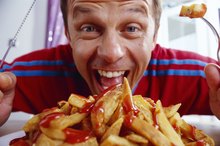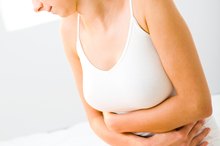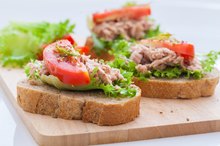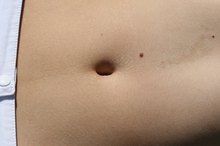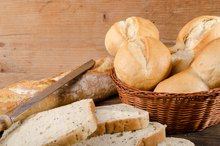What does fact checked mean?
At Healthfully, we strive to deliver objective content that is accurate and up-to-date. Our team periodically reviews articles in order to ensure content quality. The sources cited below consist of evidence from peer-reviewed journals, prominent medical organizations, academic associations, and government data.
- National Institutes of Health Dieting and Gallstones
- National Digestive Diseases Information Clearinghouse - Gallstones
The information contained on this site is for informational purposes only, and should not be used as a substitute for the advice of a professional health care provider. Please check with the appropriate physician regarding health questions and concerns. Although we strive to deliver accurate and up-to-date information, no guarantee to that effect is made.
Foods to Eat When You Have Gallstones
According to the National Institutes of Health, it estimates that as many as 20 million Americans have gallstones. However, most people with gallstones do not even know they have them. These are termed silent or painless gallstones. While it is always advisable to follow a healthy lifestyle, if one is asymptomatic, nothing needs to be done in terms of diet or medical treatment. Normally if one is having problems, doctors will want to remove the gallbladder. For most individuals, after the gallbladder is removed, they can return to eating the foods they desire.
What are Gallstones?
Gallstones are small stone-like deposits that form in the gallbladder, normally made from cholesterol. The liver produces bile, which is stored in the gallbladder. When food is eaten, particularly fatty foods, the gallbladder squeezes bile through the cystic duct into the small intestines. Sometimes, a gallstone will get into the duct, which causes a gallbladder attack and pain. So the more food you eat that causes the gallbladder to squeeze bile out, the greater your chances of having a gallbladder attack. Learning which foods to avoid may reduce this risk.
- Gallstones are small stone-like deposits that form in the gallbladder, normally made from cholesterol.
- The liver produces bile, which is stored in the gallbladder.
Who Is at Risk for Gallstones?
Pain in the Upper Right Back After Eating
Learn More
The old-time mnemonic for people who were most at risk for gallstones were the four F’s: fat, forty, female and fertile. The NIH indicates that obesity is a strong risk factor in developing gallstones, especially among women. As the Body Mass Index goes up, the risk of developing gallstones also increases. However, losing weight rapidly also increases the chances of gallstones, and people whose weight goes up and down have an even greater chance of developing gallstones. Females are much more likely to have gallstones than men, as are people over 40 years of age. Pregnant women are also more vulnerable to developing gallstones.
Individuals who have a family history of gallstones have increased risk of gallstones. Additionally, Native Americans are more susceptible. Women who use estrogen to manage menopause increase their chances of suffering from gallstones as well.
- The old-time mnemonic for people who were most at risk for gallstones were the four F’s: fat, forty, female and fertile.
- However, losing weight rapidly also increases the chances of gallstones, and people whose weight goes up and down have an even greater chance of developing gallstones.
Foods to Avoid
Other potentially problematic foods to avoid include: black tea, chocolate, ice cream, fruit juice, margarine, carbonated beverages, tap water, turnips, cabbage, cauliflower, oats, wheat, barley, rye, artificial sweeteners, preservatives, refined and bleached foods like white flour.include:
- Other potentially problematic foods to avoid include: black tea
- chocolate
- ice cream
- fruit juice
- margarine
- carbonated beverages
- tap water
- turnips
- cabbage
- cauliflower
- oats
- wheat
- barley
- rye
- artificial sweeteners
- preservatives
- refined
- bleached foods like white flour
Also you should avoid smoking. Do not overeat and do not eat under stress, if possible.
Foods to Eat
Foods to Avoid With Gallbladder Attacks
Learn More
The best foods to eat when you have gallstones are typically healthy ones. Prepare your foods by grilling, broiling, boiling, baking or poaching. Casseroles are normally also fine. Foods that normally do not cause:
- problems include: beets
- cucumbers
- green beans
- okra
- sweet potatoes
- avocados
- vinegars
- garlic
- ripe tomatoes
- shallots
- cold water fish
- lemons
- grapes
- apples
- berries
- papaya
- pears
- omega 3 oils
- vegetable oils
- The best foods to eat when you have gallstones are typically healthy ones.
Keeping a Food Diary
The foods that bring on a gallbladder attack vary with each individual. Some foods seem to be fine with some individuals and cause problems with others. By keeping a food diary of what you eat and symptoms you experience, you can narrow down which foods seem to cause you the most problems and avoid them. For example, many people tolerate tap water, poached eggs and fowl with the skin removed. Some people can tolerate small amounts of the foods to avoid. Often doctors may offer contradictory information and sometimes you see the same foods on lists of what not to eat and what to eat. So to some degree, you have to determine what is specifically causing you problems in order to identify which foods you can eat while you have gallstones.
- The foods that bring on a gallbladder attack vary with each individual.
- By keeping a food diary of what you eat and symptoms you experience, you can narrow down which foods seem to cause you the most problems and avoid them.
Related Articles
References
- National Institute of Diabetes and Digestive and Kidney Diseases. Symptoms & Causes of Gallstones. Updated November 2017.
- Stinton LM, Shaffer EA. Epidemiology of gallbladder disease: cholelithiasis and cancer. Gut Liver. 2012;6(2):172-87. doi:10.5009/gnl.2012.6.2.172
- Johns Hopkins Medicine. Gallstones.
- National Institute of Diabetes and Digestive and Kidney Diseases. Dieting & Gallstones. Updated November 2017.
- Johansson K, Sundström J, Marcus C, Hemmingsson E, Neovius M. Risk of symptomatic gallstones and cholecystectomy after a very-low-calorie diet or low-calorie diet in a commercial weight loss program: 1-year matched cohort study. Int J Obes (Lond). 2014;38(2):279-84. doi:10.1038/ijo.2013.83
- Johns Hopkins Medicine. Gallstones.
- Mayo Clinic Staff. Gallstones. Mayo Clinic. Updated November 17, 2017.
- National Institute of Diabetes and Digestive and Kidney Diseases. Dieting and Gallstones. National Institutes of Health. U.S. Department of Health and Human Services. Updated November 2017.
- National Institute of Diabetes and Digestive and Kidney Diseases. Symptoms and Causes of Gallstones. National Institutes of Health. U.S. Department of Health and Human Services. Updated November 2017.
- Portincasa P, Di Ciaula A, Grattagliano I. Preventing a Mass Disease: The Case of Gallstones Disease: Role and Competence for Family Physicians. Korean Journal of Family Medicine. 2016;37(4):205-213. doi:10.4082/kjfm.2016.37.4.205.
Writer Bio
Lynn Farris has been conducting management studies, writing technical articles and contributing to local newspapers since 1984. Having traveled throughout the world, Farris now lives in Costa Rica, teaches English and writes a column for the "National Examiner" on Costa Rica. Farris holds a Master of Business Administration and Bachelor of Arts in speech communications and psychology from Case Western Reserve University.
